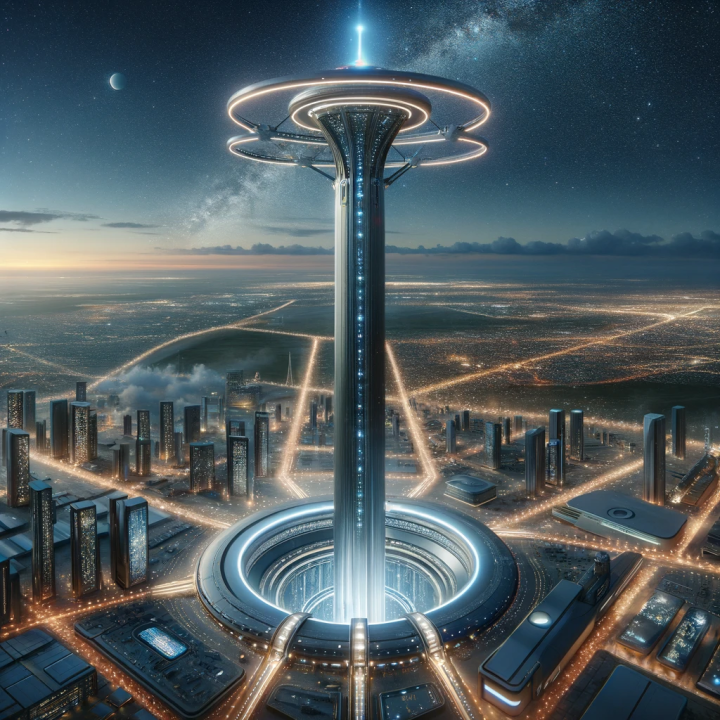
Futuristic Space Elevator Concept Receives Funding for Development
Introduction
In a significant milestone for space exploration and transportation, a futuristic concept known as the space elevator has received substantial funding for further development. This innovative concept promises to revolutionize space travel by providing a cost-effective and efficient means of reaching outer space. With its potential to transform the way we access and explore space, the space elevator is an exciting prospect that has captured the attention of both scientists and enthusiasts alike.
Understanding the Space Elevator Concept
The space elevator concept envisions a structure that connects the Earth's surface to a point in space beyond geostationary orbit. It consists of a rope made of incredibly strong materials, such as carbon nanotubes, stretching tens of thousands of kilometers into space. At the end of the tether, a counterweight would keep the elevator stable and maintain tension.
Instead of relying on traditional rockets to propel spacecraft into space, the elevator would use a climber vehicle that moves along the tether, lifting payloads and passengers to Earth orbit or beyond. This revolutionary approach promises a more cost-efficient and environmentally friendly space transportation solution than current methods.
Benefits and Advantages of a Space Elevator
The development and realization of a space elevator concept come with numerous benefits and advantages:
1. Reduced Cost: Traditional space launch systems are costly. The space elevator offers the potential for significantly reduced costs by eliminating the need for large rockets, propellants, and other resources associated with space launches.
2. Increased Payload Capacity: Unlike conventional rockets limited by size and technology, the space elevator can transport larger payloads, including equipment, supplies, satellites, and even humans, in a single trip. This increased payload capacity opens new possibilities for scientific research, commercial ventures, and space exploration.
3. Sustainability: Space launches contribute to environmental pollution by emitting greenhouse gases and debris. The space elevator relies on a tether system instead of rockets, reducing the carbon footprint and minimizing space debris generation, thus promoting sustainable space exploration.
4. Improved Accessibility: With a space elevator, space would become more accessible for a broader range of entities, including commercial enterprises, research institutions, and even space tourists. The reduced cost and increased payload capacity would democratize space access and foster further advancements in various fields.
5. Versatility: The space elevator's versatility extends beyond Earth's orbit. It allows for the easy transport of payloads to the Moon, other planets, or asteroids for scientific research, resource exploration, and potential colonization efforts.
Funding and Development Prospects
Building a space elevator is an ambitious undertaking that requires significant technological advancements and engineering expertise. While the concept has garnered attention in the scientific community for years, securing funding for its development has been a challenging task.
However, recent developments indicate a shift in the narrative. Private investors, government agencies, and space exploration organizations are now recognizing the potential of the space elevator and its long-term impact on space travel. Substantial funding has been allocated to research and development projects to overcome the technological hurdles of constructing a functioning and safe space elevator.
Additionally, partnerships between aerospace companies, universities, and research institutions have been formed to pool resources and expertise. These collaborations foster innovation and accelerate progress toward realizing this groundbreaking concept.
Challenges and Considerations
Despite the promising prospects of the space elevator concept, several challenges and considerations remain:
1. Technological Hurdles: The development of the space elevator relies heavily on advancements in material science, specifically in the creation of ultra-strong materials capable of withstanding immense tension and stress.
2. Earthbound Infrastructure: Constructing a structure of such magnitude requires a robust infrastructure on Earth, including anchor points, launch facilities, and a transport system to move materials to space.
3. Space Debris and Safety: Careful consideration must be given to managing space debris and safety protocols when operating a space elevator. Collision risks with existing satellites and space junk pose significant challenges that must be mitigated.
4. Regulatory Frameworks: Establishing international regulations and protocols for using and operating space elevators will ensure safety, security, and fair access for all stakeholders.
Conclusion
The space elevator concept represents a radical departure from traditional methods of space travel, offering exciting possibilities for the future of space exploration and transportation. With recent funding and renewed interest, significant advancements are being made toward overcoming the technological challenges and making the space elevator a reality. As development continues, the space elevator concept holds immense potential to transform how we access, utilize, and explore space, opening new frontiers for scientific research, commercial ventures, and human exploration beyond Earth's atmosphere.